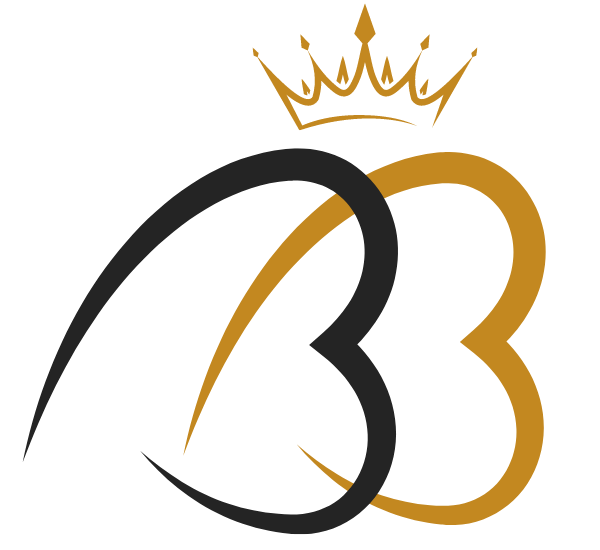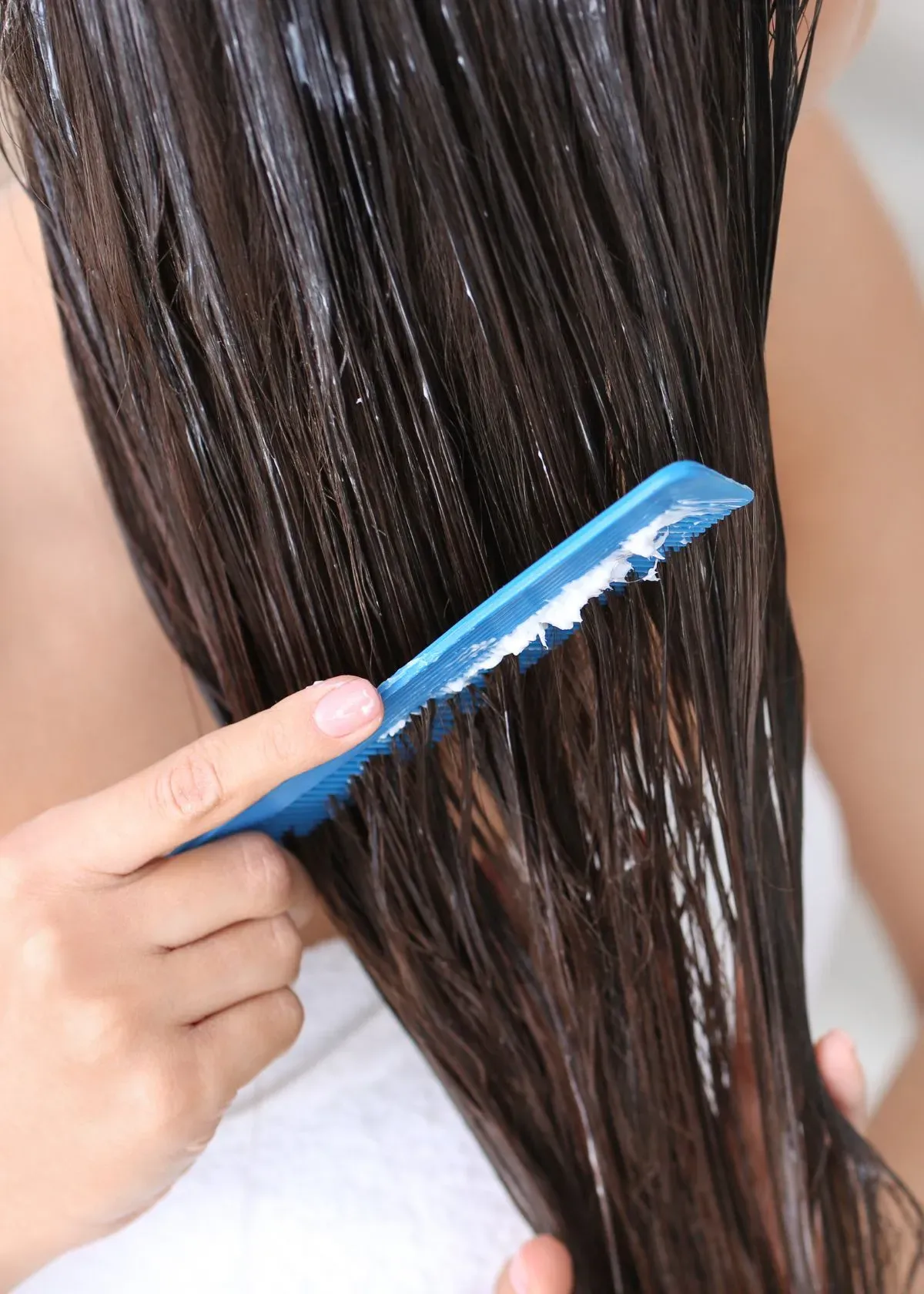Leave-in conditioner isn't just another hair care product—it's a game changer for your locks. This special kind of conditioner is applied after shampooing and doesn't get rinsed out, offering extra moisturizing power to both damp and dry strands.
There are different formulas available for various hair types, so finding one that suits your specific needs is crucial. While traditional conditioners play their part in keeping our hair healthy, using a leave-in provides long-lasting results—think less tangling and more shine.
Especially for people with curly manes, it adds definition to those spirals by locking in moisture, which is often much needed.
However, even with its many benefits, it's important not to go overboard, as too much can lead to buildup or adverse reactions if you're sensitive to certain ingredients. To maximize its magic while avoiding pitfalls like these requires some know-how on application techniques and complementary products such as oils or creams.
Let this be the first step towards embracing softer, more resilient hair full of life. Keep reading for healthier locks tomorrow!
- Leave-in conditioner offers lasting hydration, fights frizz, and helps with styling by sealing in moisture and smoothing hair cuticles.
- It's crucial to choose the right type of leave-in conditioner for your hair type and needs while looking for nourishing ingredients like coconut oil or argan oil.
- Apply leave-in conditioner to damp hair, focus on the tips to prevent split ends, use just enough product to avoid buildup, and comb through for even distribution.
- Overusing leave-in conditioners can lead to heavy, greasy hair, so it’s important to use the correct amount based on hair length and thickness.
- Using a regular rinse-out conditioner alongside a leave-in treatment maximizes benefits; you can also pair it with a hair oil or curl cream for enhanced results.
Benefits of Leave-In Conditioner for All Hair Types
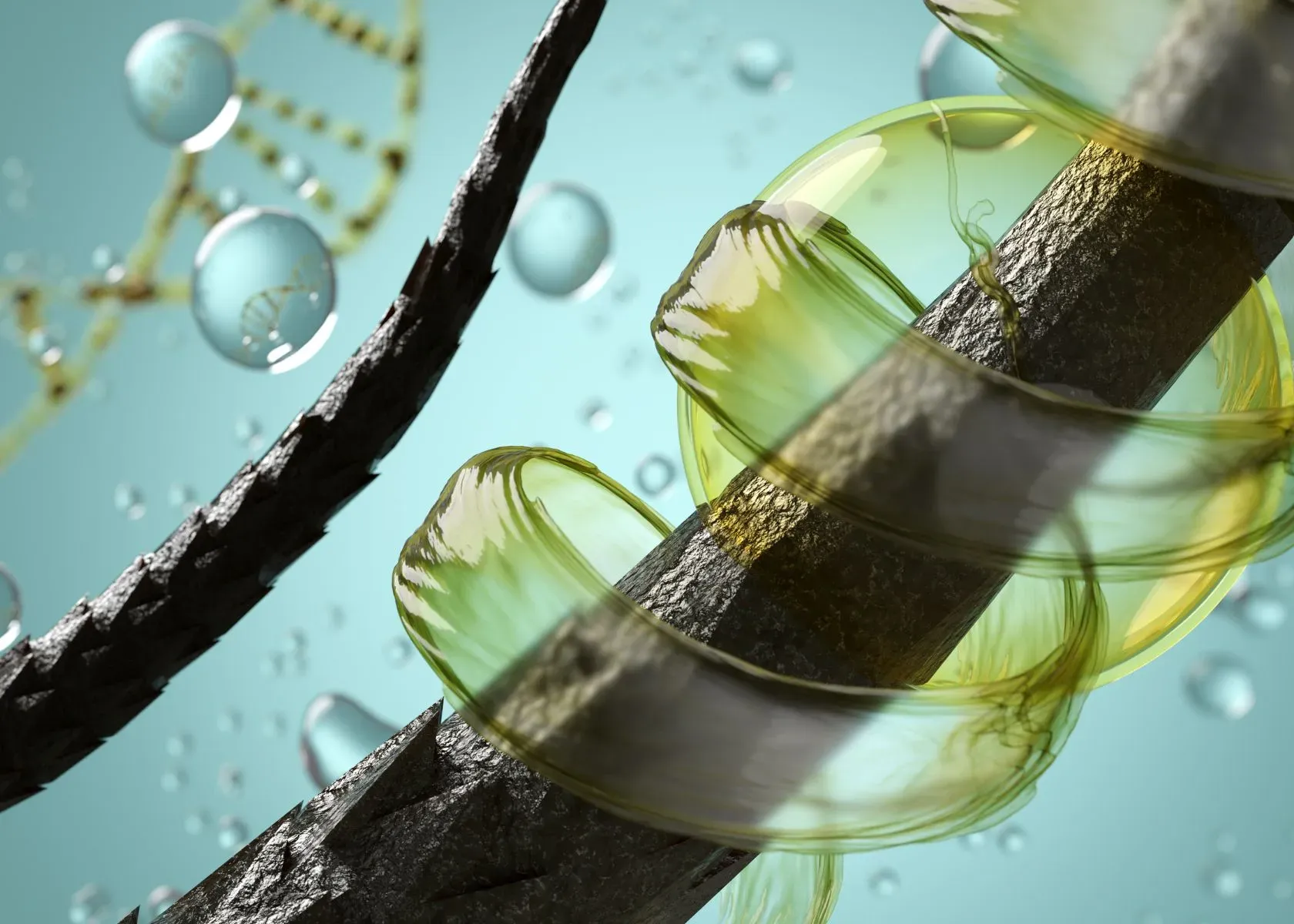
Leave-in conditioner hydrates the hair, fights frizz, helps with styling, and adds moisture to dry hair. It's a versatile product that can benefit all hair types.
Hydrates Hair
Moisturizing hair is paramount for maintaining its health, flexibility, and shine. Leave-in conditioner steps up to the challenge by delivering continuous hydration throughout the day.
It targets the fine hair shaft with nourishing ingredients that lock in moisture and prevent dryness. This extra layer of protection shields each strand from environmental stressors like sun and wind, which can strip away natural oils.
Applying leave-in conditioner to damp hair after a shower helps seal in the water from your wash, keeping your hair hydrated longer than it would be otherwise. This hydration reduces the chances of breakage while making hair feel softer and more manageable.
Whether you have curly locks that crave moisture or straight strands prone to dryness, regular use of leave-in treatments ensures that your hair stays quenched no matter what your day brings.
Fights Frizz
Leave-in conditioner is an effective tool for combating frizz, creating a smooth and sleek appearance. It helps to seal the frizzy hair cuticle, preventing moisture from penetrating and causing frizz.
The hydrating properties of the leave-in conditioner reduce the likelihood of flyaways and static, helping to maintain a polished look throughout the day. By providing essential moisture and nourishment to the hair strands, the leave-in conditioner creates a protective barrier against environmental factors that contribute to frizz.
Applying a leave-in conditioner on damp or dry hair can help control unruly frizz by smoothing down the hair's outer layer. This makes it easier to manage and style your hair without worrying about unwanted frizz ruining your look.
Helps with Styling
To further enhance its benefits, leave-in conditioner also helps with styling. It provides added moisture to the hair, making it easier to manage and style. This extra hydration can reduce frizz and make hair more pliable for different hairstyles, especially for those with curly or dry hair.
By nourishing and strengthening the strands, the leave-in conditioner contributes to a smoother and more polished look when styling without weighing down the hair.
Additionally, using a leave-in conditioner before heat styling can provide a layer of protection against potential damage from hot tools. By adding an extra boost of moisture and nutrients to the hair, it creates a healthier foundation for any type of styling product or technique.
Adds moisture to dry hair
Helping with styling is just one of the many benefits of leave-in conditioner. Enriched with hydrating and nourishing properties, the leave-in conditioner is especially beneficial for adding moisture to dry hair.
It helps in repairing existing damage while providing long-lasting hydration, making it an essential step in maintaining healthy and well-moisturized locks.
This extra dose of moisture not only helps in preventing breakage but also aids in retaining the hair's natural shine, leaving you with beautifully moisturized and rejuvenated hair.
How to Use Leave-In Conditioner?
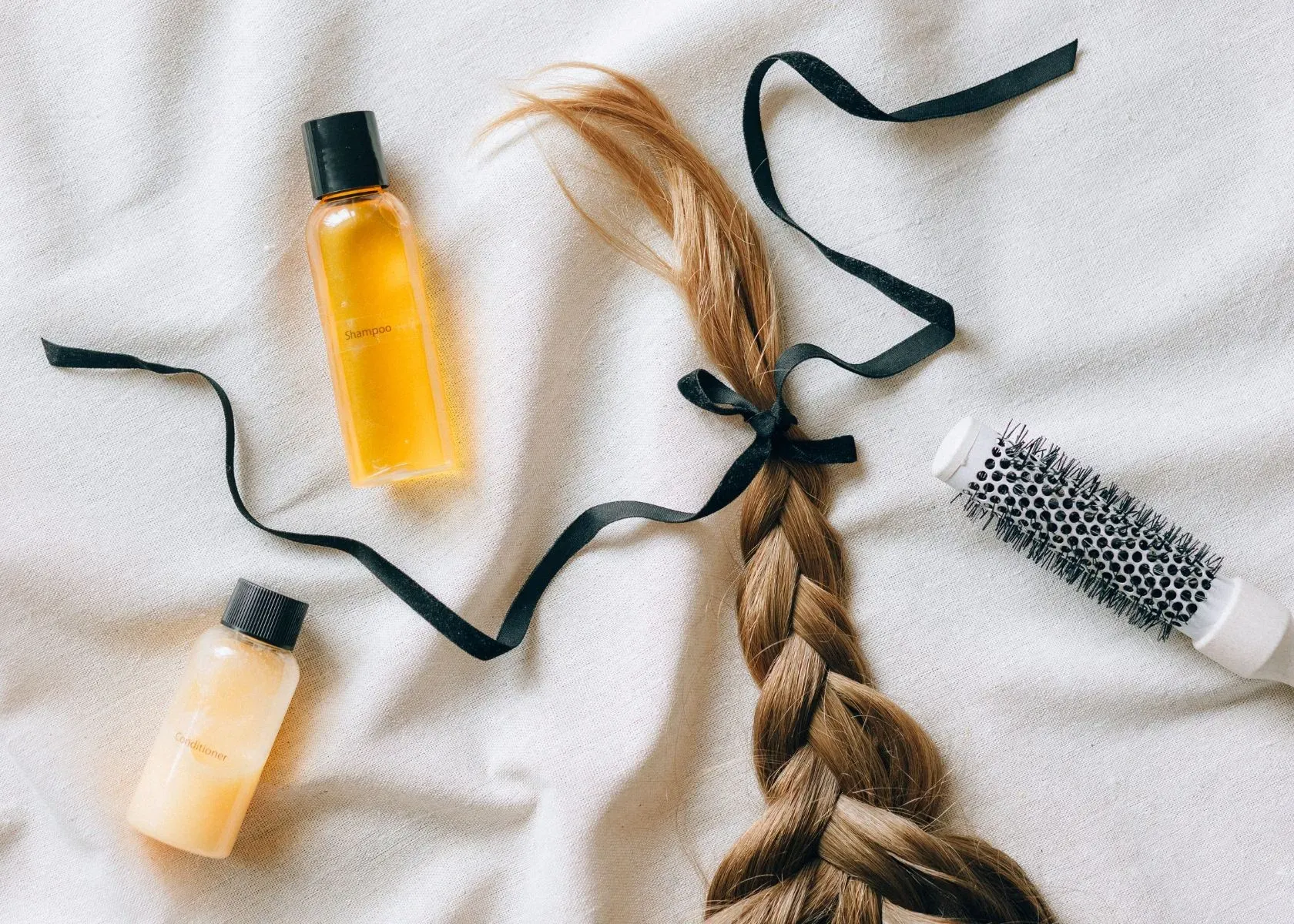
Apply the leave-in conditioner on damp hair, concentrating on the tips and using the right amount for even distribution. For more useful tips on maximizing the benefits of a leave-in conditioner, keep reading.
Application on Damp Hair
To apply leave-in conditioner on damp or wet hair, start by washing and towel-drying your hair. Then, spray or apply a small amount of the leave-in conditioner onto your palms and work it through the lengths of your hair, concentrating on the ends.
Gently comb through with a wide-tooth comb to ensure even distribution. Avoid applying too much product, as this may weigh down your hair. Once applied, style your hair as usual, allowing the leave-in conditioner to provide lasting hydration and protection throughout the day.
Using a leave-in conditioner on damp hair allows for better absorption of its nourishing ingredients into the hair shafts while providing long-lasting moisture retention and protection from environmental stressors.
Concentrating on Tips
To apply leave-in conditioner, focus on the tips of your hair, where it tends to be driest and most damaged. Gently work the product into the ends of your hair to ensure it receives an extra boost of hydration and protection.
By concentrating on the tips, you can effectively combat split ends and breakage while promoting overall hair health.
After applying a leave-in conditioner to your damp hair, use a wide-tooth comb or your fingers to distribute the product evenly from roots to tips. This step helps ensure that every strand benefits from the conditioning properties of the product, leaving your hair moisturized and protected throughout.
Using the Right Amount
After concentrating on tips, it's crucial to use the right amount of leave-in conditioner for optimal results. Start with a small amount and adjust as needed based on your hair length and thickness.
For shorter hair, a dime-sized portion should suffice, while longer or thicker hair may require a quarter-sized dollop. Focusing primarily on the mid-lengths to ends will prevent product buildup at the roots and ensure even distribution throughout your strands.
It's essential to avoid overdoing it – using too much leave-in conditioner can weigh down your hair and lead to greasiness. By using the appropriate amount, you'll effectively moisturize and protect your locks without leaving residue or causing an oily appearance.
Brushing for Even Distribution
To ensure that the leave-in conditioner is evenly distributed throughout the color-treated hair, gently brush or comb through the hair after applying the product. This helps to prevent any clumps or patches of conditioner from forming, ensuring that every strand receives the nourishment and moisture it needs.
Brushing also aids in detangling the hair, making styling easier and reducing breakage.
After applying a lightweight leave-in conditioner, use a wide-tooth comb or a specialized detangling brush to evenly distribute the product from roots to ends. This helps to avoid concentrated spots of product and ensures that each section of your hair receives equal benefits from the conditioning treatment.
Precautions and Potential Side Effects
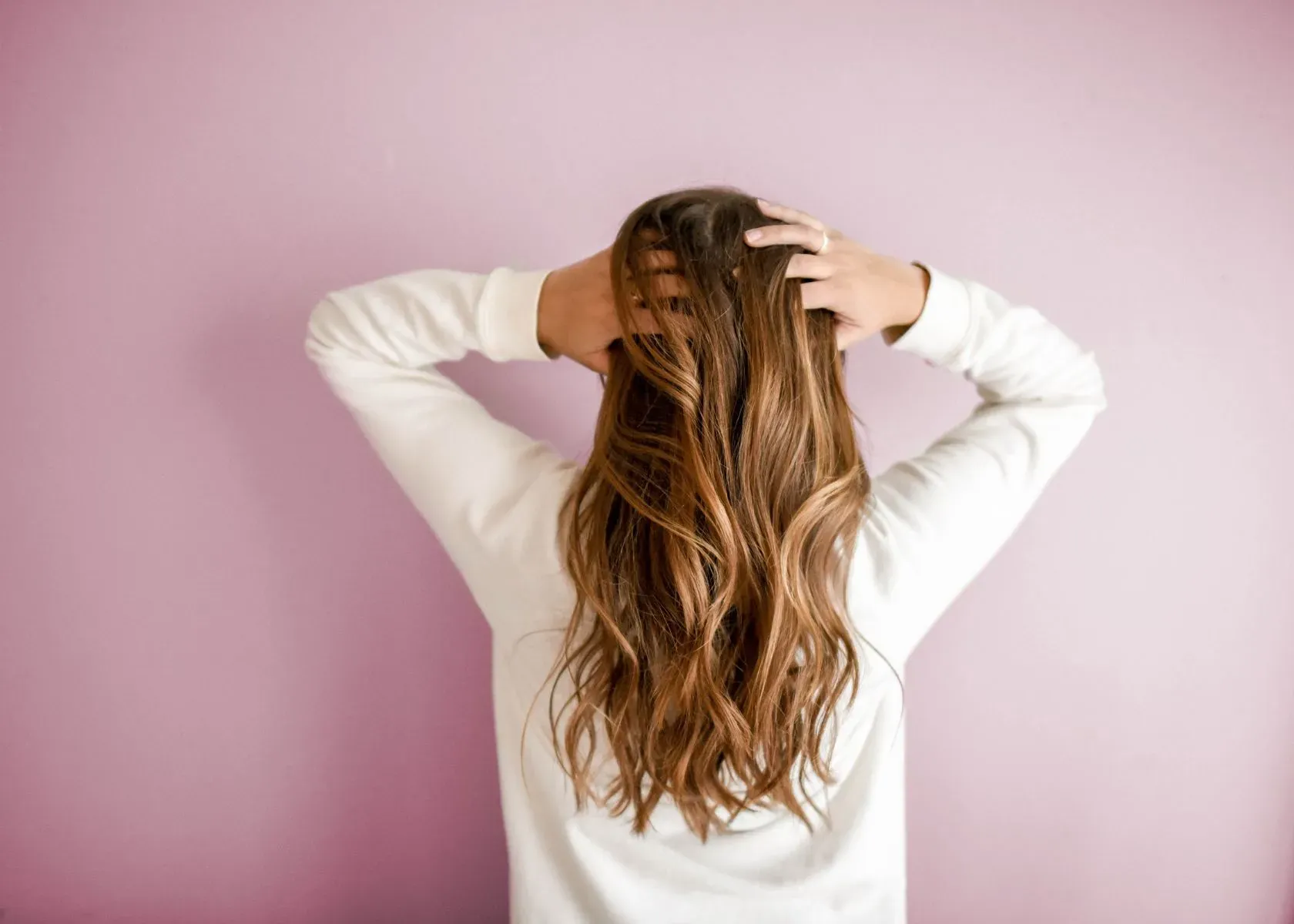
Using too much leave-in conditioner can weigh down your hair and cause product buildup, so it's important to use the right amount for your hair type. To learn more about the side effects of leave-in conditioner, keep reading.
Using Too Much Product
Overuse of leave-in conditioners can lead to product buildup, leaving the healthy hair feeling heavy and greasy. This buildup can also attract dirt and pollution, making the hair look dull and weighed down.
Additionally, using excessive amounts of leave-in conditioner may cause the strands to become overly saturated, leading to limp and lifeless hair.
To prevent these issues, it's crucial to use an appropriate amount of leave-in conditioner based on your hair's length and thickness. Using a pea-sized amount for short hair or a quarter-sized amount for longer hair is generally sufficient.
Potential for Product Buildup
Using leave-in conditioner excessively or not rinsing it out properly can lead to potential product buildup on the hair and scalp. This buildup may cause the hair to look greasy, feel heavy, or become weighed down over time.
Additionally, residue from the product can attract dirt and pollutants, leading to an unclean and unhealthy scalp environment. To prevent this issue, ensure that you are using the right amount of leave-in conditioner for your hair type and cleansing your hair regularly to remove any buildup.
Overuse of leave-in conditioner without proper cleaning can result in a layer of residue on the scalp and strands, which may affect its appearance and health. Proper application techniques along with regular washing, will help avoid potential issues related to excessive product usage on the hair.
Adverse Reactions to Certain Ingredients
Potential for product buildup can lead to adverse reactions if the leave-in conditioner contains certain ingredients that may not agree with your thick hair and scalp. Some common ingredients to watch out for include sulfates, parabens, and silicones, which can cause irritation or allergic reactions in some individuals.
It's essential to be mindful of any known sensitivities or allergies you have when choosing a leave-in conditioner, as well as checking the ingredient list for potential irritants.
Certain ingredients like fragrances and dyes can also trigger negative skin reactions, so it's important to opt for fragrance-free and dye-free formulas if you have sensitive skin or are prone to allergies.
Does Leave in Conditioner Work - FAQs
Many people use leave-in conditioners in an effort to boost hair health, add shine, provide heat protection, reduce frizz, and make hair more manageable. But do these products actually work?
Below are some frequently asked questions about leave-in conditioners and how well they deliver on their promises for improving hair's look and feel.
What does leave-in conditioner do for your hair?
Leave-in conditioner works to moisturize hair, help with detangling, and prevent breakage by keeping your hair smooth and hydrated.
Can leave-in treatment replace regular hair conditioning?
While it's great for added moisture and protection, leave-in treatment is usually a complement to regular in-shower hair conditioners rather than a complete replacement.
Is leave-in conditioner good for all types of hair?
Yes, leave-in conditioner benefits most hair types by providing extra hydration, smoothing the strands, and aiding in styling without weighing the hair down.
How often should I use a leave-in conditioner on my hair?
You can apply a leave-in conditioner regularly after showers or when your hair needs some extra care to maintain moisture retention and manageability.
Does using a leave-in product help with long-term hair repair?
Regular use of quality Leavein treatments can contribute to the overall health of your locks by helping to minimize damage and supporting ongoing Hair repair efforts.
Conclusion
Leave-in conditioner is a versatile and beneficial hair care product that provides hydration, nourishment, and strength to all hair types. Its practical application on damp or dry hair makes it easy to incorporate into any routine for efficient results.
Using leave-in conditioner regularly can lead to significant improvements in the overall health and appearance of the hair. Consider exploring different types of formulas available to find the best fit for your specific needs.
Remember, with proper use and attention, a leave-in conditioner can work wonders for maintaining healthy and beautiful hair. Share your experience of using a leave-in conditioner with all of us in the comments below.
Read More About Leave-In Conditioners


